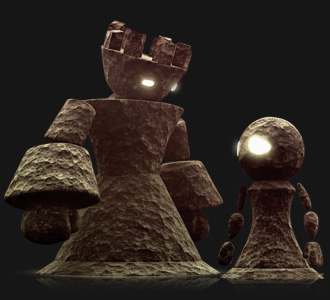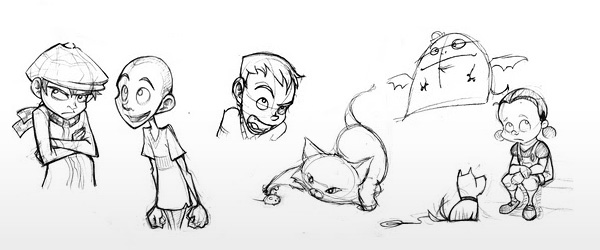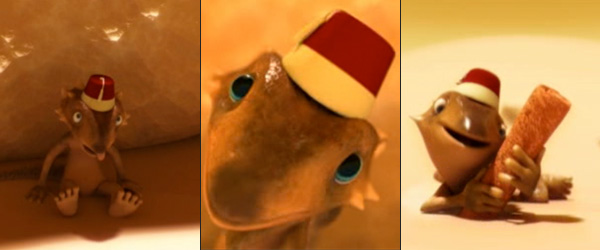Summary
 The 3D Animation training course is designed to introduce candidates to the concepts of 3D-based modeling and animation. This training course provides the candidates with a range of skills involved in creating 3D art. Candidates will be taught modeling, animating, texturing and rendering using Industry standard 3D software. Candidates will also learn the basics of creating 2D art using a Digital Imaging Software and basic video editing. This training course is particularly relevant for anyone who wishes to establish or enhance their skills for further development in 3D graphics for games, entertainment or film for existing graphic design professionals.
The 3D Animation training course is designed to introduce candidates to the concepts of 3D-based modeling and animation. This training course provides the candidates with a range of skills involved in creating 3D art. Candidates will be taught modeling, animating, texturing and rendering using Industry standard 3D software. Candidates will also learn the basics of creating 2D art using a Digital Imaging Software and basic video editing. This training course is particularly relevant for anyone who wishes to establish or enhance their skills for further development in 3D graphics for games, entertainment or film for existing graphic design professionals.
This training course provides comprehensive coverage of 3D animation production principles from the very basics of animation and modeling to the advanced industry techniques. It is designed to prepare participants for a creative career in the entertainment industry such as special/visual effects in movies, video games, broadcast advertising, software, Internet and entertainment industries and develops teamwork skills and problem solving techniques relevant to real world production environments.
Upon completion of this course, Students will be able to work as Animation Supervisors, Character Animators, 3D Animators, 3D Modelers, Digital matte Artists, Texture Artists and other 3D and animation related fields in Post-production Houses and Animation Studios.
What is Animation?
Animation is the illusion of motion created by the consecutive display of images of static elements. It is an optical illusion of motion due to the phenomenon of persistence of vision. This could be anything from a flipbook to a motion picture film. In film and video production, this refers to techniques by which each frame of a film or movie is produced individually. These frames may be generated by computers, or by photographing a drawn or painted image.
Computer animation production is mainly of two types—classical animation and 3D/CGI animation. Traditional animation involves considerable manual artistry. Every minute of action on film and television is divided into 24 or 30 frames, depending on the video format. 3D/CGI Animation involves the generation of the subject matter and the process of animation on a digital platform using various methods to capture realistic movements and gestures.

Classical Animation: Also referred to as Traditional Animation which involves considerable manual artistry. Every minute of action on film and television is divided into 24 or 30 frames per second (fps), depending on the video format. In classical animation, each frame is manually drawn, moved or positioned by hand. In this context, Stop-Motion and Clay-mation are also categorized as Classical Animation. Graduates of this animation discipline may be called Celluloid/CEL-Animators, Traditional Animators and/or Stop Motion Artists depending on the distinct area of specialization.

3D/CGI Animation: CGI or computer-generated imagery, can be defined as the use of computers for creating moving images. In CGI Animation, there are two current methods of animation; the first is in which the key frames are placed manually within the digital environment with the rest of the frames automatically supplied by the computer software. The second is achieved using motion capture technology to either capture the key frame movements of a real character and/or transformed to a generated real-time computer rendering process. Graduates of this animation discipline may be called 3D Animators, 3D Modelers, Visual Effects Artists and/or CG Artists depending on the distinct area of specialization.
Course Structure
For the candidates to gain a basic understanding of how animation works and the necessary complimentary skills needed for animation. At this level, candidates are required to have finish with a strong foundation in digital imaging and a competency in Animation Principles.
- Digital Imaging & Textures
- Animation Principles
- 3D Modeling Techniques
This level aims to cover the digital animation fundamentals such as organic character modeling and rigging, composition, design, mood, environment, props, dramatic effect, continuity of action, camera mechanics and the overall look of the film. Candidates will learn to apply their knowledge and understanding in composition, colors, framing, etc gained from other modules into the creation of a 3D scene and also exposed to the art and techniques of creating simple yet convincing effects utilizing the latest professional software and plug-ins to produce animation of fluid, cloth and explosives.
- Layout Design & Cinematography for Animation
- 3D Animation
- Advanced Digital Animation
Aims to provide candidates with a foundation in acting, improvisation, characterization techniques and directing and also to build upon the animation concepts taught in the 3D Animation Fundamentals module. Candidates will have the opportunity to apply all that they have learned into managing and executing real-world animated film projects.
- Acting for Animation
- Advanced 3D Character Animation
- Animation Production







